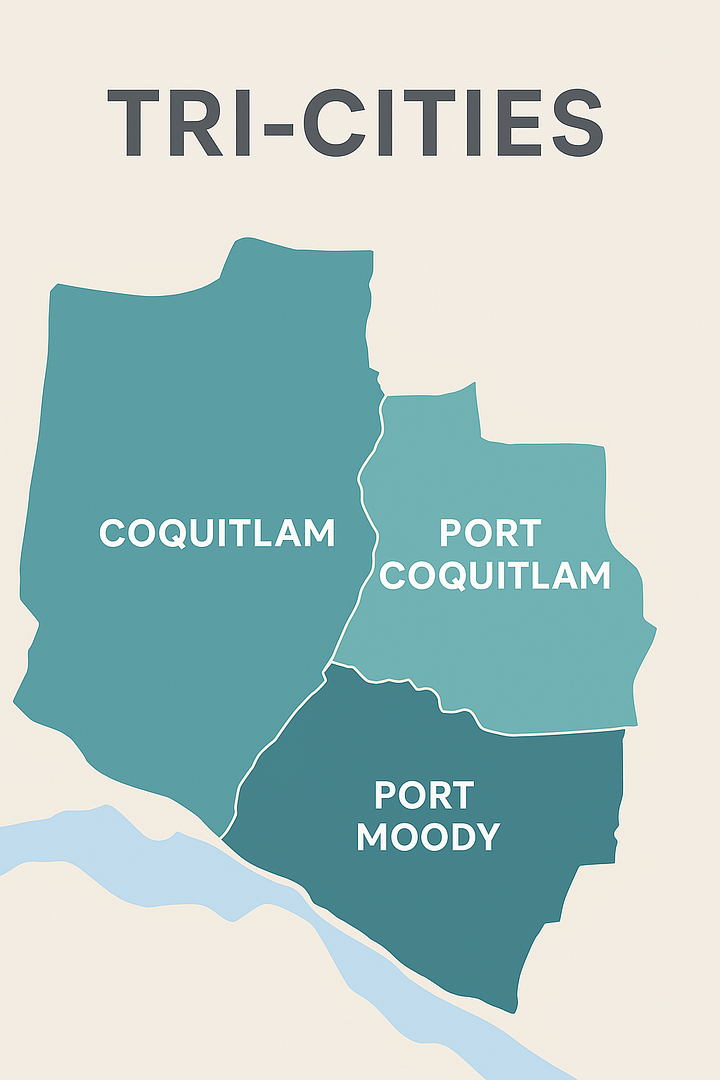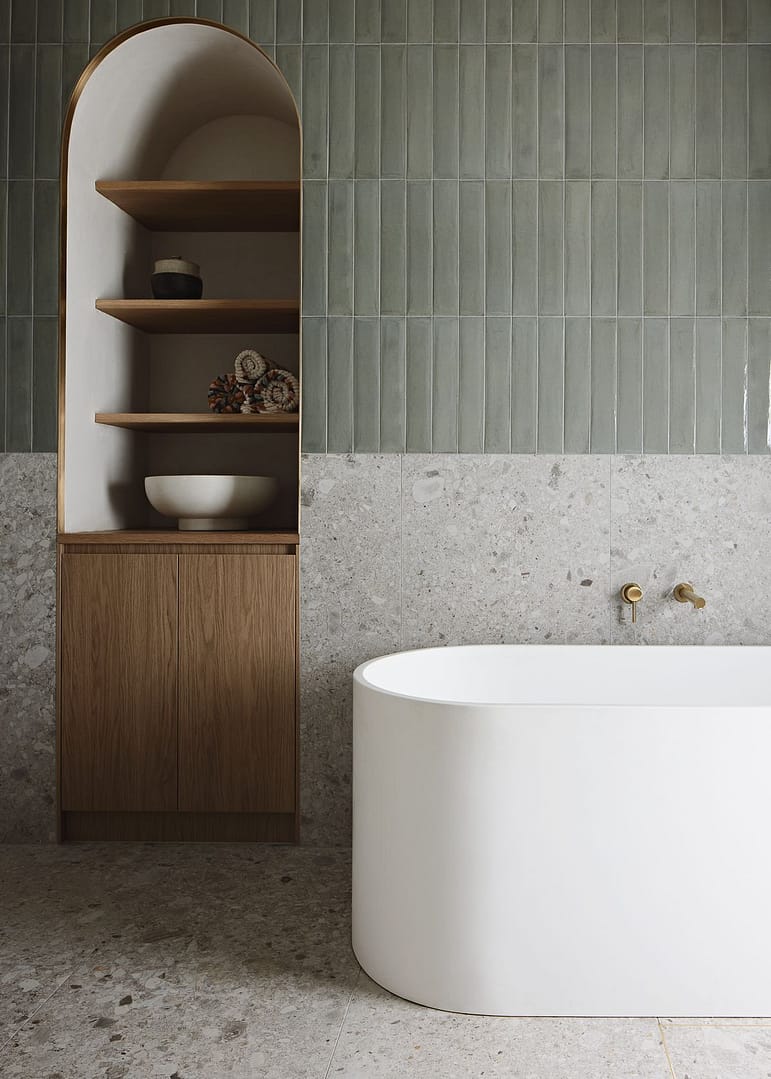
- Kitchen
Wabi-Sabi Kitchen Design: Embracing Imperfect Beauty
- By matin@quayconstruction.ca
Table of Contents
A 15th-century Japanese tea master once shattered a prized Chinese teacup, then repaired it with gold, creating something even more beautiful—this revolutionary act birthed the wabi-sabi philosophy that continues to influence design worldwide. Wabi-sabi kitchen design embraces this ancient Japanese aesthetic concept that finds beauty in imperfection and transience. Unlike the polished perfection of modern kitchens, a wabi-sabi kitchen celebrates natural materials, organic forms, and the marks of time—creating spaces that feel authentically lived-in and deeply connected to nature.
In today’s fast-paced world, where kitchen renovation Vancouver trends come and go, wabi-sabi kitchens offer something different: a timeless approach that values authenticity over perfection. This design philosophy encourages us to slow down, appreciate subtle beauty, and create spaces that nurture both body and soul.
This comprehensive guide explores how wabi-sabi kitchen design principles can transform your cooking space into a sanctuary of calm and mindful living. We’ll delve into its rich history, core philosophy, and practical applications that can inspire your next kitchen remodeling Vancouver project.
Understanding the Wabi-Sabi Philosophy
At its core, wabi-sabi embraces three simple truths: nothing lasts, nothing is finished, and nothing is perfect. These principles translate into a kitchen design approach that values:
- Simplicity: Clean lines and uncluttered spaces that allow the eye to rest
- Naturalness: Organic materials and forms that connect us to the earth
- Imperfection: Celebrating the unique character that comes with use and age
- Subtlety: Quiet elegance rather than flashy statements
- Functionality: Practical spaces that serve daily needs without excess
Wabi-sabi kitchen design isn’t about creating perfect spaces that remain untouched. Instead, it embraces the kitchen as the heart of the home—a place where life happens, meals are shared, and memories are made. The small imperfections, worn edges, and natural variations become part of the story your kitchen tells.
The History of Wabi-Sabi Kitchen Design
While wabi-sabi kitchen design has gained popularity in Western countries in recent decades, its roots stretch back centuries in Japanese culture. The concept emerged from Zen Buddhism, which values simplicity and mindfulness. Originally, “wabi” referred to the loneliness of living in nature, while “sabi” described the passage of time or withered beauty.
Traditional Japanese kitchens embodied these principles through necessity. Limited space required thoughtful organization. Natural materials like wood, stone, and clay were used for their availability and functionality. These kitchens weren’t designed to impress but to serve as practical spaces for food preparation.
The modern interpretation of wabi-sabi kitchen design began to take shape in the mid-20th century when Japanese design principles started influencing Western architecture and interior design. Architects like Tadao Ando helped popularize concepts like natural light, organic materials, and minimal ornamentation.
Today’s wabi-sabi kitchens blend these traditional Japanese aesthetic principles with contemporary needs and materials. The result is a kitchen that feels both timeless and thoroughly modern—a perfect antidote to the disposable design culture that has dominated recent decades.
Key Elements of Wabi-Sabi Kitchen Design
Natural Materials
The foundation of wabi-sabi kitchen design lies in using natural, imperfect materials that age beautifully. Consider incorporating:
- Wood: Reclaimed timber, hand-hewn beams, or live-edge countertops bring warmth and character. Woods like oak, walnut, and cedar develop rich patinas over time.
- Stone: Irregular stone countertops, flooring, or backsplashes add organic texture. Soft stones like soapstone or limestone show wear patterns that tell the story of their use.
- Clay and Ceramics: Handmade tiles and pottery offer subtle variations in color and texture that machine-made versions cannot replicate.
- Metal: Unlacquered brass, copper, or bronze fixtures naturally patina, changing and developing character over time.
- Natural Fibers: Linen, cotton, and hemp textiles add softness and tactile interest to the space.
In kitchen renovation Vancouver projects, incorporating these materials can transform even the most contemporary kitchen into one with wabi-sabi character.
Neutral, Earthy Color Palette
Wabi-sabi kitchens favor colors found in nature—soft whites, warm beiges, gentle grays, and muted earth tones. These subdued hues create a sense of calm and allow the natural beauty of materials to shine. Avoid harsh contrasts or bright colors that demand attention. Instead, embrace subtle variations in tone that create depth and interest.
Handcrafted Elements
Mass-produced items lack the soul and character of handcrafted pieces. Incorporate handmade elements wherever possible:
- Hand-thrown ceramic bowls and plates
- Custom-made cabinetry with visible joinery
- Hand-forged hardware and fixtures
- Woven baskets for storage
- Hand-painted tiles with slight irregularities
These items connect your kitchen to human craftsmanship and tradition, adding layers of meaning to your space.
Mindful Minimalism
Wabi-sabi kitchen design embraces simplicity, but not sterility. The goal is to create space that feels open and uncluttered while still being warm and inviting. Remove unnecessary items and focus on quality over quantity. Each element should serve a purpose or bring genuine joy.
Open shelving displaying carefully curated collections of everyday items can embody this principle. Think of a few beautiful ceramic mugs, a collection of wooden spoons worn smooth with use, or copper pots that have developed a natural patina.
Embracing Imperfection
Perhaps the most revolutionary aspect of wabi-sabi kitchen design is its celebration of imperfection. Cracks, chips, worn edges, and uneven surfaces aren’t flaws to be fixed—they’re features to be appreciated. They tell the story of your kitchen’s life and use.
This doesn’t mean embracing sloppiness or poor craftsmanship. Rather, it means accepting the natural character of materials and the marks that come with time and use. A wooden countertop with knife marks, a copper sink that’s developed a patina, or a stone floor worn smooth in high-traffic areas all add authentic character to your space.
Tips for Creating a Wabi-Sabi Kitchen
Start with a Thoughtful Layout
Before considering aesthetics, focus on creating a kitchen layout that supports your daily rituals and cooking habits. Wabi-sabi values functionality above all. A well-designed kitchen should feel intuitive and make your daily tasks flow smoothly.
Consider how you move through the space and what you need within arm’s reach. Think about the activities that bring you joy in the kitchen—whether it’s baking bread, brewing coffee, or preparing family meals—and design your space to support these activities.
Incorporate Natural Light
Natural light is essential in wabi-sabi kitchen design. It highlights the beauty of natural materials and creates a connection to the outdoors and the passage of time. If possible, incorporate large windows or skylights to flood your kitchen with daylight.
Supplement natural light with warm, soft artificial lighting. Avoid harsh overhead lights in favor of multiple sources of gentle illumination. Consider fixtures made from natural materials like paper, wood, or handblown glass.
Curate Your Collections
Wabi-sabi kitchens often feature carefully curated collections of meaningful objects. These might include:
- Handcrafted pottery from local artisans
- Wooden utensils worn smooth with use
- Well-loved cookbooks with stained pages
- Family heirlooms that tell your story
- Natural objects like stones, branches, or dried flowers
Display these items thoughtfully, giving each piece room to breathe. Rotate your collections seasonally to keep your kitchen feeling fresh and to honor the changing cycles of nature.
Embrace Weathered Patinas
While kitchen remodeling Vancouver often focuses on making everything look brand new, wabi-sabi encourages us to appreciate the beauty of aging. Consider how materials will change over time and choose those that will develop character rather than simply deteriorate.
For example:
- Unlacquered brass hardware will develop a living patina
- Soapstone countertops will darken and soften with use
- Copper pots and pans will develop rich, varied colors
- Wood will deepen in tone and develop a natural luster
These changes add depth and story to your kitchen that cannot be replicated with new materials.
Incorporate Living Elements
Plants and flowers bring life, energy, and seasonal change to your wabi-sabi kitchen. Consider adding:
- Potted herbs for cooking and fragrance
- A small indoor tree or large plant for grounding
- Seasonal flowers in simple vessels
- Moss or other low-maintenance greenery
These living elements connect your kitchen to nature’s cycles and add vitality to the space.
Pros and Cons of Wabi-Sabi Kitchen Design
Pros
- Timeless Appeal: Unlike trendy designs that quickly become dated, wabi-sabi kitchens have a timeless quality that ages gracefully.
- Sustainability: By valuing natural materials and embracing imperfection, wabi-sabi design encourages sustainability and reduces waste.
- Reduced Stress: Studies show that natural materials and minimalist spaces can reduce stress and promote wellbeing.
- Unique Character: Your wabi-sabi kitchen will be uniquely yours, reflecting your life and values rather than copying a showroom model.
- Flexibility: This design philosophy adapts well to different architectural styles and can be implemented gradually.
Cons
- Maintenance Considerations: Some natural materials require more care and maintenance than their synthetic counterparts.
- Cost Factors: Handcrafted elements and quality natural materials can be more expensive initially, though they often last longer.
- Resale Concerns: Highly personalized spaces might not appeal to all potential buyers if you plan to sell your home.
- Finding Balance: Creating a space that feels authentically wabi-sabi rather than simply unfinished can be challenging.
- Sourcing Materials: Finding truly natural, sustainable, and ethically sourced materials requires research and effort.
Who Should Consider Wabi-Sabi Kitchen Design?
Wabi-sabi kitchen design is particularly well-suited for:
- Mindful Homeowners: Those who value presence and mindfulness in daily activities
- Environmentally Conscious Individuals: People committed to sustainable living and natural materials
- Those Seeking Calm: Anyone looking to create a peaceful sanctuary away from the bustle of modern life
- Collectors of Handcrafted Items: People who appreciate artisanal craftsmanship and unique objects
- Long-Term Homeowners: Those planning to stay in their homes for many years, allowing their kitchen to age naturally
If you’re planning a kitchen renovation Vancouver project with longevity in mind, wabi-sabi principles can help create a space that will remain relevant and beautiful for decades.
Similar Design Philosophies: Japandi, Zen, and Rustic Modern
While unique, wabi-sabi kitchen design shares elements with several other design philosophies:
Japandi
Japandi combines Japanese minimalism with Scandinavian functionality. Like wabi-sabi, it values natural materials and craftsmanship but tends to be more polished and less focused on imperfection. Japandi kitchens often feature clean lines, light woods, and a brighter color palette.
Zen Kitchen Design
Zen kitchen design emphasizes simplicity, balance, and harmony. While it shares wabi-sabi’s Japanese roots and focus on tranquility, Zen kitchens tend to be more deliberately arranged and less organic in their evolution. They often feature symmetrical layouts and carefully controlled elements.
Rustic Modern
Rustic modern kitchens blend contemporary design with rustic elements. They often incorporate reclaimed wood, industrial metals, and vintage items. While there’s overlap with wabi-sabi in the appreciation of natural materials and patina, rustic modern tends to be more deliberately styled and less philosophical in its approach.
Implementing Wabi-Sabi Principles in Kitchen Remodeling Vancouver
For those considering kitchen remodeling Vancouver projects with wabi-sabi influence, here are practical steps to take:
- Work with understanding professionals: Find contractors and designers who appreciate the wabi-sabi aesthetic and won’t try to “perfect” the imperfections you value.
- Source local materials: Look for locally sourced wood, stone, and other materials that connect your kitchen to your specific location.
- Preserve existing elements: Consider what can be kept and honored in your current kitchen—perhaps old floorboards or a weathered brick wall.
- Plan for aging: Choose materials and finishes that will develop character over time rather than deteriorate.
- Incorporate craftsmanship: Budget for at least a few handcrafted elements that will serve as focal points in your space.
Remember that a true wabi-sabi kitchen should feel personal and lived-in, not like a perfect reproduction from a design magazine.
FAQ: Wabi-Sabi Kitchen Design
Is wabi-sabi kitchen design expensive?
While some elements of wabi-sabi design (like handcrafted items) can be costly, the philosophy actually encourages resourcefulness and simplicity. Many aspects, such as preserving existing elements or choosing sustainable materials, can be budget-friendly in the long run.
How do I maintain natural materials in a wabi-sabi kitchen?
Most natural materials require simple, regular care rather than harsh chemicals. Wooden surfaces might need occasional oiling, stone may need sealing, and metals develop patinas that can be either preserved or polished depending on your preference. The key is to use gentle, natural cleaning products and to accept that materials will change over time.
Can I incorporate wabi-sabi elements into my existing kitchen?
Absolutely! Wabi-sabi is as much a mindset as it is a design style. Start by decluttering and simplifying your space. Then add natural elements like wooden utensils, handmade ceramics, or linen towels. Consider removing cabinet doors to create open shelving or replacing hardware with handcrafted alternatives.
How do I balance wabi-sabi aesthetics with modern appliances?
This is a common challenge. Consider appliances with simple designs and minimal branding. Panel-ready appliances can be covered with natural materials to blend with your aesthetic. Alternatively, embrace the contrast as part of the wabi-sabi philosophy of accepting life as it is.
Will a wabi-sabi kitchen look dated in a few years?
One of the benefits of wabi-sabi kitchen design is its timelessness. By focusing on natural materials and simplicity rather than trendy features, your kitchen will develop character rather than becoming dated. A well-designed wabi-sabi kitchen should look even better in a decade than it does when first completed.
Conclusion: The Timeless Appeal of Wabi-Sabi Kitchen Design
In a world increasingly dominated by perfectionism and disposable design, wabi-sabi kitchen design offers a refreshing alternative. By embracing imperfection, celebrating natural materials, and honoring the passage of time, we create spaces that feel authentic, soulful, and deeply connected to our humanity.
Whether you’re planning a complete kitchen renovation Vancouver project or simply looking to infuse your existing space with more mindful elements, wabi-sabi principles can guide you toward creating a kitchen that nurtures both body and spirit. In the end, the most beautiful kitchens aren’t the showpieces that remain untouched—they’re the spaces that bear witness to our lives, our meals, and our precious moments with loved ones.
As you consider your own kitchen design journey, remember that wabi-sabi isn’t about achieving a specific look but about adopting a different way of seeing. It’s about finding beauty in the cracks, character in the worn edges, and meaning in the marks of time. When we embrace this perspective, our kitchens become not just places to prepare food, but spaces that nourish our souls.
Related Posts

Coquitlam vs. Port Coquitlam vs. Port Moody: Renovation Comparison






